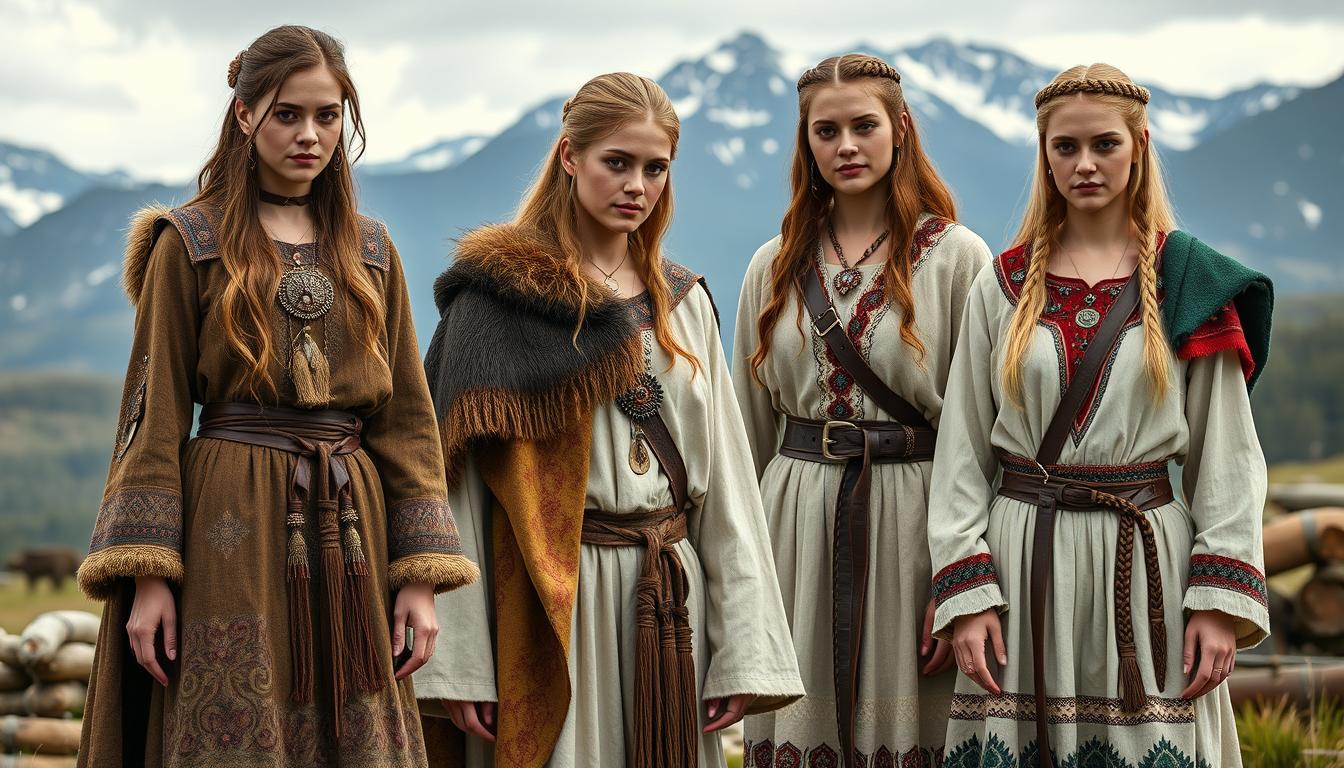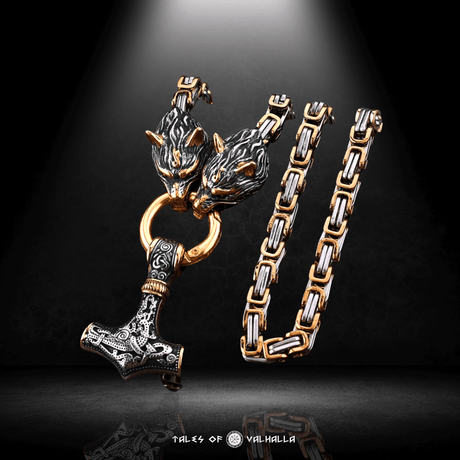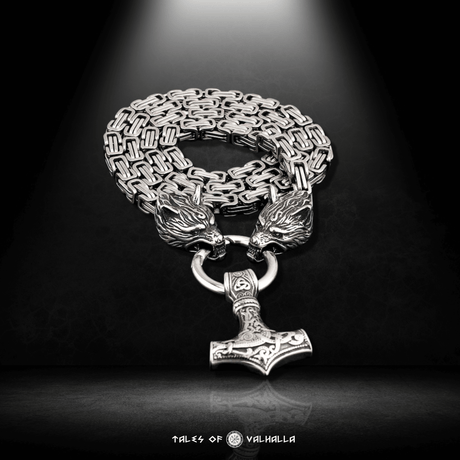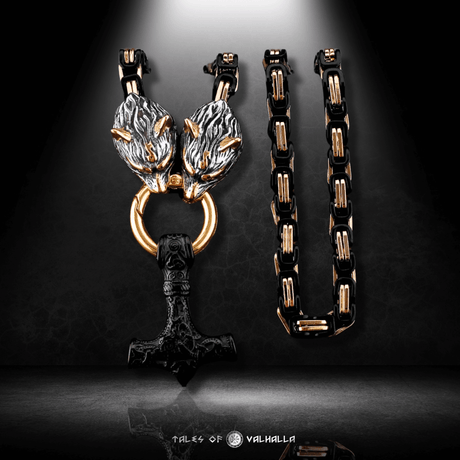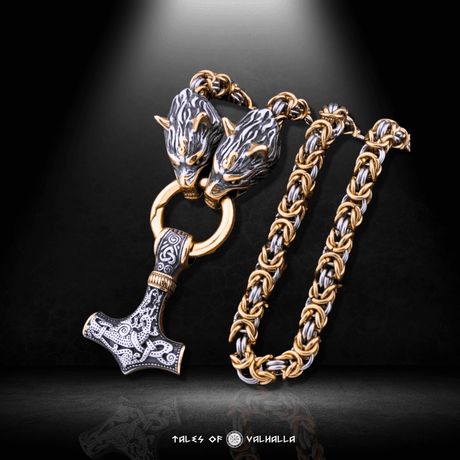In the annals of history, Viking culture stands out for its incredible blend of strength, adventure, and resilience. While much of the focus has been placed on Viking warriors and their conquests, the women who played a crucial role in Viking society often go unnoticed. Today, their legacy endures not only through the sagas but also through the evolving fashion trends inspired by their unique styles. Nordic clothing for women, particularly in the Viking era, was a reflection of functionality, status, and power, with a dose of practicality for the harsh Scandinavian climate.
For modern enthusiasts, Viking clothing styles offer an alluring combination of history, fashion, and a touch of rebelliousness. Whether you're crafting the perfect Shield Maiden costume, exploring authentic historical garments, or seeking inspiration for Viking-themed events, this blog will serve as your ultimate guide to Viking women’s clothing styles and trends.
How Viking Women’s Clothing Reflected Power and Identity
Viking women were much more than caretakers of the home—they were farmers, traders, explorers, and in some cases, warriors. Their clothing played a key role in reflecting their identity, status, and the harsh environment in which they lived.
As you delve into how Viking women dressed, it’s important to remember that their garments weren’t just about covering the body—they were expressions of the times. Clothing was functional, built to withstand the challenges of life in the far northern reaches of Europe. However, the garments also held a deep cultural significance, often reflecting social status, regional customs, and even personal identity.

How Viking Women’s Clothing Reflected Power and Identity
Historical and Social Context of Viking Women’s Clothing
To understand the true essence of Viking women's apparel, we need to dive deep into the historical and cultural context. The Viking Age, generally considered to span from the late 8th century to the early 11th century, saw the Norse people establishing themselves as a dominant force across Europe. Viking society was largely agrarian, with a strong warrior culture. Women played an integral role in sustaining this society, whether managing households, working the land, or supporting their warrior husbands.
In Viking society, women’s clothing was both practical and symbolic. The clothes were designed to keep women warm and protected from the brutal Scandinavian winters, while also reflecting their social status and wealth. Wealthier Viking women had access to finer materials like silk, while lower-status women typically wore wool and linen garments. Status was further expressed through intricate jewelry and brooches, many of which are considered masterpieces of Viking craftsmanship.
Essential Garments in Viking Women's Apparel
The Viking Underdress: Foundation of the Outfit
The foundation of most Viking women’s outfits was the underdress, typically made from linen or wool. This long, tunic-like garment was the innermost layer and was worn year-round. Linen was preferred for summer months due to its breathability, while wool was favored during the colder months.
Viking women crafted these dresses themselves, often weaving the fabric at home. Wealthier women may have had more elaborately woven fabrics, and those with access to trade routes could purchase linen or wool from other regions.
The underdress had long sleeves and reached down to the ankles, providing coverage and warmth. It was both functional and feminine, allowing for ease of movement while also providing a modest silhouette. For added warmth, Viking women would layer other garments over this basic underdress, creating an ensemble that was both practical and visually appealing.
The Apron Dress: A Hallmark of Viking Fashion
One of the most distinctive elements of Viking women’s clothing was the apron dress, or "smokkr." This outer garment was sleeveless and was worn over the underdress, creating a layered look that was iconic in Viking fashion. The apron dress was usually made from wool and could be simple or adorned with intricate designs, depending on the woman's social standing.
What made the apron dress particularly unique were the brooches used to fasten the straps over the shoulders. These brooches, typically made of bronze or silver, were highly decorative and often symbolized the woman’s wealth and social status. Some brooches featured detailed designs of animals, Norse mythology symbols, or intricate geometric patterns.
The apron dress also offered an opportunity for women to showcase their wealth and creativity. Some women would add embroidered designs, beads, and even imported silks to make their apron dresses stand out. This layering style not only provided warmth but also allowed for customization and individual expression in a way that was both functional and beautiful.
Layering for Warmth: Cloaks, Shawls, and Mantles
In the colder climates of Scandinavia, layering was essential. Viking women would often wear cloaks, shawls, or mantles over their dresses to protect themselves from the elements. These outer garments were usually made from thick wool and were secured with a brooch or clasp, similar to the ones used for the apron dress.
Viking cloaks were often long and draped elegantly over the shoulders. Women of higher status would adorn their cloaks with elaborate embroidery or trim, while more practical versions would be plain and functional. Cloaks also served a dual purpose: not only did they provide warmth, but they also offered protection against the rain, wind, and snow.
The shawls or mantles worn by Viking women varied in style, depending on their needs and resources. Some women wore lightweight shawls made of linen, while others donned heavier woolen mantles for added protection during the harsh Scandinavian winters. As with other aspects of Viking women’s clothing, these outer layers could be simple or ornate, depending on the woman’s social status and access to materials.
- Buy now: Woman's Costume
Footwear for the Viking Woman: Durable and Practical
Footwear was an essential part of any Viking woman’s wardrobe, as they spent much of their time walking, working, and traveling. Shoes were typically made from leather and were designed to be durable and practical, capable of withstanding the rugged terrain and harsh weather conditions of Scandinavia.
Viking women’s shoes were usually ankle-length, with a simple design that allowed for ease of movement. Leather was the material of choice due to its durability and availability, although wealthier women might have had access to higher-quality leather or imported materials.
In colder climates, Viking women would often wear woolen socks inside their leather shoes to keep their feet warm. The design of the shoes was functional and reflected the practical needs of Viking life. While the shoes themselves were often simple, some women would embellish their footwear with decorative patterns or metal accents, especially for special occasions.
Accessories and Jewelry in Viking Women's Clothing
Jewelry as a Status Symbol
In Viking society, jewelry was not just for decoration—it was a reflection of wealth and social standing. Viking women often adorned themselves with necklaces, bracelets, rings, and brooches, all of which were handcrafted from materials like bronze, silver, and gold.
One of the most distinctive pieces of jewelry worn by Viking women were their brooches. These were not only used to fasten garments like the apron dress but were also intricately designed and highly prized. The brooches worn by Viking women could be round, oval, or even in the shape of animals, reflecting the rich symbolism of Norse culture.
Necklaces and Beads
Necklaces were another important accessory in Viking women’s fashion. They were often made from beads crafted from glass, amber, or precious stones. Wealthier Viking women could afford necklaces made of silver or gold, often featuring intricate designs and symbols from Norse mythology.
Beads held a special significance in Viking culture. Some women would wear bead necklaces that had been passed down through generations, while others would trade for beads from far-off lands, making their necklaces a symbol of wealth and status.
Hair and Headwear
Viking women paid great attention to their hair and headwear. Married women typically covered their hair with a simple linen cap or scarf, while unmarried women often left their hair down or styled it in intricate braids. Hair braiding was a common practice among Viking women, as it kept their hair neat and manageable while they went about their daily tasks.
Headscarves were practical but also symbolic. In some cases, the type of headwear a woman wore could indicate her marital status, age, or social rank. Headscarves were usually made from linen or wool and were either plain or embroidered, depending on the woman’s personal style and resources.
Female Viking Warriors: The Myth of the Shield Maiden
The legend of the Shield Maiden has fascinated historians and storytellers for centuries. These fierce warrior women are often depicted as fighting alongside men in battle, dressed in armor and wielding swords or spears. While the existence of Shield Maidens is still debated by historians, there’s no denying the impact they’ve had on modern interpretations of Viking women’s clothing.

Female Viking Warriors: The Myth of the Shield Maiden
Crafting the Perfect Shield Maiden Costume
For those looking to recreate the look of a Shield Maiden costume, there are several key elements to consider. The costume should reflect both the strength and femininity of Viking warrior women, incorporating practical garments alongside warrior-like accessories.
Layering and Armor
Start with the basic elements of a Viking woman’s wardrobe: the underdress and apron dress. From there, you can add pieces that mimic armor, such as leather bracers, chainmail accents, or a belt with decorative sword sheaths. While historical evidence of female Viking warriors wearing full armor is scarce, modern interpretations often include metal or leather pieces to enhance the warrior aesthetic.
Weapons and Accessories
No Viking warrior woman costume is complete without a weapon. Popular choices include swords, spears, and shields—items that were not only functional in battle but also symbols of Viking strength. Shields, in particular, were iconic for Viking warriors and can be an essential accessory for creating an authentic Shield Maiden look.
Viking Women’s Clothing in Modern Fashion and Pop Culture
The influence of Viking culture can be seen in modern fashion and pop culture, particularly in the popularity of Viking Halloween costumes and themed events. Whether inspired by historical accuracy or the romanticized versions of Vikings in media, people continue to be drawn to the powerful and mysterious allure of Viking women’s clothing.
Viking Halloween Costumes for Women
For those looking to create the ultimate Viking Halloween costume, the key is to blend historical elements with a modern twist. Whether you’re dressing up as a Shield Maiden or a traditional Viking woman, here are some tips to create an authentic costume:
-
Choose Natural Materials: Stick to wool, linen, and leather to mimic the materials Viking women would have worn. You can find modern equivalents that look similar but are easier to work with.
-
Add Brooches and Jewelry: Even if you’re making a simple costume, adding Viking-style brooches and jewelry will elevate your look and make it feel more authentic.
-
Incorporate Armor Pieces: If you’re going for a warrior look, add leather bracers, belts, or even a small shield to complete the outfit.
-
Don’t Forget the Hairstyle: A braided hairstyle or a simple headscarf will add a finishing touch to your Viking costume and make it look historically accurate.
How to Make a Viking Costume: DIY Tips and Ideas
Making your own Viking costume can be a fun and rewarding project. Whether you’re attending a Viking festival, a Halloween party, or simply want to explore Viking fashion, here’s a step-by-step guide to creating your own Viking costume:
Step 1: Gather Your Materials
To start, you’ll need the following materials:
- Linen or cotton fabric for the underdress
- Wool fabric for the apron dress
- Leather for belts, bracers, and footwear
- Metal brooches or clasps
- Jewelry (glass beads, necklaces)

How to Make a Viking Costume: DIY Tips and Ideas
Step 2: Construct the Garments
Begin by crafting a simple linen or cotton underdress. This should be a long tunic with long sleeves, reaching down to the ankles. You can use a simple sewing pattern or modify an existing tunic.
Next, construct the apron dress using wool fabric. The apron dress should be sleeveless and fitted, with straps that fasten over the shoulders using brooches. You can decorate the apron dress with embroidery or beads for added authenticity.
Step 3: Add Accessories
Once your basic garments are complete, it’s time to add the accessories. Make a leather belt to cinch the apron dress at the waist, and add a pair of leather bracers or a Viking-style cloak for added flair. Jewelry, such as a bead necklace or brooches, will complete the look.
Step 4: Final Touches
Finish your Viking costume by braiding your hair or wearing a simple headscarf. Leather boots or simple shoes will complete the outfit and give it the authentic Viking look.
Conclusion
The clothing worn by Viking women was both practical and a reflection of their culture and status. From apron dresses to intricate jewelry, Viking women’s apparel continues to inspire modern fashion, much like the collections from Tales of Valhalla.
Whether researching Viking attire or creating a costume, the legacy of these powerful women lives on. Their clothing tells stories of strength, survival, and beauty, just as collections like Tales of Valhalla help keep these timeless styles relevant today.
FAQ
1. What materials were used in Viking women's clothing?
Viking women’s clothing was typically made from natural fibers like wool and linen. Wool was the most common material due to its warmth and availability, while linen was used for lighter garments, especially in the summer. Wealthier women sometimes had access to imported silk, and many garments were decorated with embroidery and intricate designs.
2. What is a Viking apron dress, and how was it worn?
The apron dress (also called "smokkr") was a sleeveless outer garment worn over a linen underdress. It was fastened with shoulder straps secured by brooches, which were often highly decorative. The apron dress was a hallmark of Viking women's fashion, providing warmth and allowing for additional layers and embellishments, depending on a woman’s social status.
3. How did Viking women accessorize their clothing?
Viking women wore a variety of jewelry, including brooches, necklaces, bracelets, and rings, typically made from bronze, silver, and sometimes gold. Brooches were functional, securing garments like the apron dress, but they were also decorative and symbolized wealth and status. Beaded necklaces made of glass, amber, or precious stones were also popular.
4. How can I create a modern Viking costume for women?
To create a modern Viking costume, start with a simple linen underdress and add a wool apron dress over the top. Use brooches or clasps to secure the apron dress, and accessorize with leather belts, bracers, and Viking-inspired jewelry. For a Shield Maiden costume, consider adding armor-like pieces such as leather or chainmail accents, and finish the look with a weapon like a sword or shield.
5. Did Viking women wear armor in battle?
Historical evidence on Viking women wearing armor is limited, but the myth of Shield Maidens suggests that some women may have participated in battle. While full armor was not commonly worn by Viking women, modern interpretations of Viking warrior women often incorporate armor-like elements such as leather bracers or chainmail into costumes.
6. What hairstyle and headwear did Viking women wear?
Viking women’s hairstyles were often braided or worn loose, depending on their marital status. Married women typically covered their hair with a linen cap or scarf, while unmarried women often wore their hair in intricate braids. Headscarves and caps were both practical and symbolic, indicating a woman’s status or age within the community

